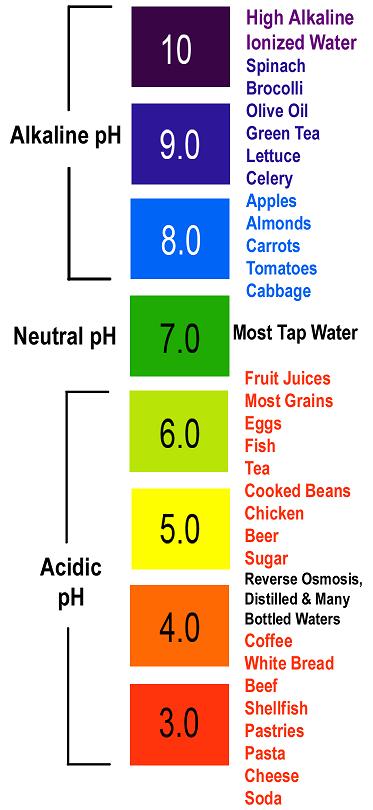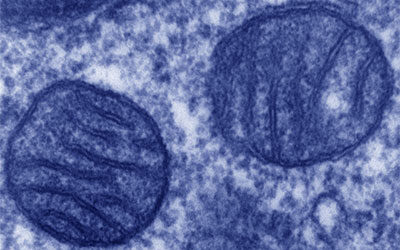 Due to the recent discovery that people with Lyme disease universally suffer from hyperammonemia, the excessive accumulation of ammonia in the liver, jaws, heart, and brain, and in rare cases the entire body, certain dietary changes can help reduce the severity of the symptoms of Lyme disease.
Due to the recent discovery that people with Lyme disease universally suffer from hyperammonemia, the excessive accumulation of ammonia in the liver, jaws, heart, and brain, and in rare cases the entire body, certain dietary changes can help reduce the severity of the symptoms of Lyme disease.
Ammonia is very alkaline with a pH of 11.6. Many doctors have been taught that most sick people have acidic bodies (<7.0 pH). The reality is not that simple. People may be predominantly acidic but may also be extremely alkaline in the areas of ammonia accumulation. This is why many people worsen when they are given dietary recommendations such as eating fresh fruits and vegetables, which work to alkalinize the body. Drinking alkalinized water would also tend to aggravate symptoms related to hyperammonemia. While there are many people who have been helped by these alkaline diets and alkalinized water, it is likely that they did not have a significant accumulation of ammonia and therefore did not experience a worsening of their symptoms. It appears that alkaline diets can aggravate the already over-alkaline, ammonia regions of their body: the brain, jaws, heart, and liver. The ammonia conditions must be cleared before addressing the more acidic regions of the body. High protein foods such as grains and meat contain an amino-acid (the breakdown unit of protein) called L-arginine. L-arginine in foods and as a nutritional supplement should not be taken in cases of hyperammonemia. Research reveals that ammonia (NH3) + arginine + manganese = increased nitric oxide (NO) up to 53% in astrocytes (brain cells), leading to increased brain swelling. “Manganese in excess is neurotoxic and causes a CNS disorder that resembles Parkinson’s disease (manganism). Manganese accumulates excessively in astrocytes, which renders these cells more vulnerable to its toxicity.”[i] When localized brain swelling increases due to ammonia, symptoms, which may be mistakenly called a Herxheimer reaction, increase dramatically as the brain energy metabolism becomes disrupted. The primary symptoms of profound fatigue and increased pain-sensitivity can escalate to critical.
Heart symptoms of all types can be improved by the clearing of ammonia and its source, the bacteria.
Armed with this knowledge, health care professionals would be wise to instigate a cycled, protein-poor diet for Lyme patients during treatment to minimize aggravations from arginine. A general guideline for cycling on and off the avoidance of arginine-rich foods might be two weeks of avoidance and one week back on protein foods to avoid problems due to depleting the body of protein.
While strict dietary limitations may not absolutely necessary for some individuals, it is a good recommendation for those people with severe brain toxicity and highly reactive symptoms to decrease their intake of arginine-rich foods.
Foods that are high in arginine, and therefore should be avoided until ammonia issues are resolved are carob, coconut, chocolate, dairy, gelatin, oats, meat of any kind, soybeans, walnuts, white flour, wheat, wheat germ, buckwheat, granola, oatmeal, dairy products (cottage cheese, ricotta, nonfat dry milk, skim yogurt), nuts (coconut, pecans, cashews, walnuts, almonds, Brazil nuts, hazel nuts, peanuts), seeds (pumpkin, sesame, sunflower), poultry (chicken and turkey light meat), wild game (pheasant, quail), seafood (halibut, lobster, salmon, shrimp, snails, tuna in water), chick peas,.[ii],[iii] )
Many people suffering with Lyme disease also have various viral issues as well, such as Human Herpes Virus-6, Epstein Barr Virus, and others. Arginine feeds viruses. The amino acid L-Lysine blocks arginine’s ability to feed viruses, so it will benefit everyone to boost the dietary intake of L-Lysine. If you must have meat, fish is the best choice. It is high in L-Lysine, which may be adequate for combating the effects of the arginine in the fish.
Lysine rich foods include legumes, eggs, lima beans, potatoes, and brewers yeast. You may also purchase L-Lysine as a nutritional supplement from a health food store, or as low as about $6 from Life Extension (which we have used for years).
Dietary changes can lessen the severity of virtually every symptom related to Lyme disease, however the source of the ammonia, the Borrelia, must be resolved, and the body’s ability to clear out the accumulated ammonia must be treated before dietary restrictions can be lifted.
_______________________________________________________________________
[i] Rama Rao K, Reddy P, et al, Manganese induces cell swelling in cultured astrocytes. NeuroToxicology Volume 28, Issue 4, July 2007, 807-812.
[ii] Cooper, M.D., M.P.H. and Kenneth, H. Advanced Nutritional Therapies, Nashville: Thomas Nelson Publishers, 1996.
[iii] Murray, N.D., Michael, T., and Pizzorno, N.D. Encyclopedia of Natural Medicine, Rocklin, California: Prima Publishing, 1991.
Call us at 316-686-5900 for more information on scheduling a visit; we believe that at Hansa Center for Optimum Health you can regain optimum health again.
This article is a follow-up from the article printed in Healthy Referral (Winter 2010/11) titled “The Alkaline Brain: Lyme Borrelia-induced Hyper-ammonemia“









UGGGH!
I totally disagree with this. Alkaline water is the only thing that helps my parkansonian sypmtoms, trouble walking, talking, and tremors.
Plus a high protein diet of the Weston A Price variety is better for you.
No wonder people are so sick following this advise.
Hi Dr. Jernigan,
I love this page! I am a nutritionist and a member of Weston A Price, and I also understand the important roles of lysine/arginine in our health. I have a problem with ammonia on my brain (from Candida) and have found helpful information here. I have attached a website that my sister (the researcher) created for this. The only difference that I see is that you think dairy is high in arginine. I hope you get a chance to look at the website. She has packed a lot of information in it, including the critical role that cottonseed oil has in lysine and our diets. She includes a link to her other website, dedicated to the evils of cottonseed oil. It’s a huge problem today!
Thanks!
Maureen McGovern, DT
I thought the website would post. Here it is:
http://www.tendler5.wix.com/highlysinediet
Origionally I could not walk because my balance was so bad. I had memory issues and constant pains. Jaw pains, cried a lot (sometimes for no reason, believe it was low calcium). Exhausted. I tried juicing and got much worse. I tried low sugar juicing such as high greens, no fruit. Tried high apples and carrots, salads, and got much much worse. I don’t believe the vegetables made me worse because they are alkaline, they made me worse as they were taking my fats. In my opinion, i felt much better on LOADS of ghee, butter and at the time fatty meats. But now I know that the protein from the meat without the fat doesn’t help and may hinder progress because it is hard to digest, toxic in excess and cruel. Fish oils made me much worse, evening primrose helped a lot! Flax did not help. Cream did not help. I have not experimented with nuts as they are seasonally in nature, so eating them everyday did not seem natural. By the way, nuts and seeds should always be soaked else they become harmful, google to find out how long each nut should be soaked for and why this is important. Some nuts are radiated, i.e. not raw. Although, see the Raw for 30 days on youtube (Gabriel cousens books treating diabetes with raw nuts, hemp protein, greens, sprouts and low sugary salad foods, seeds OR check out hippocrites diet and Dr. Clement). A LOW SUGAR, LOW CARB diet helps me. Lots of love and best wishes to all that suffer, especially with Lyme Disease/CFS.
Vegetables take your fats out via containing alkaloids and plant fibers. Fruit are much worse at taking out fats.
Science has proven that fats have anti-viral, anti-fungal, anti-bacterial properties. Not just coconut oil which they brag about and make a lot of money from such a cheap item! Pork/Beef Lard (not hydrogenated, bleached, trans fats) have healthy antibiotic properties. Think about it… the lard and ghee, butter tends to remain sterile, doesn’t grow mold on it like cheese.
I found fats from ghee or butter (tablespoons, several times a day with meals, ideally organic grass fed animal). If you eat lard, animal has to die so I have stopped this as the dairy fats were fine. Cheese may encourage fungal infections and it is very high in the casein (google casein and risks).
Google high fat diet healing
http://www.foodandhealing.com/articles/article-highfat.htm
High fat help in various infections
Chagas disease
http://www.ncbi.nlm.nih.gov/pubmed/25275627
TB (needing long term atx like Lyme)
http://www.ncbi.nlm.nih.gov/pubmed/20516273
check out youtube Beat cancer with ketogenic diet (starving cancer of glucose)
Treating TB
http://healthydietsandscience.blogspot.co.uk/2011/02/high-fat-diets-help-to-treat.html
Cholesterol improves on high animal fats, low carb.
http://healthydietsandscience.blogspot.co.uk/p/low-cholesterol.html
cholesterol myth
http://www.medicalnewstoday.com/articles/267834.php
In the same way you can starve bacteria of glucose. Saturated fats help cells to ramain strong (increases rigidity) and helps discourage viruses entering cells to replicate.
Combining my advice with Dr. David Jernigan might look like this
Loads of ghee or butter with Lysine rich foods include legumes, eggs, lima beans, potatoes (not for everyone as it is very starchy and in the deadly nightshade family).
Dr. Jernigan said fish is not to bad. Fish is good with butter or ghee, also some may feel fine on some vegetables (sprouts, cabbage, salad, just don’t have loads until the infection load has decreased).
Lyme bacteria persists for years. High fat becomes your cheap long-term antibiotic therapy. IV antibiotics for 2 years comes with side effects and some Lyme patients after 2 years of IV antibiotics and other treatments (debt) need to go back on it. Least returning to ghee/butter (if you find symptoms return after stopping) it not going to harm you.
The butter/ghee will not boost your gut bacteria, byt may help to discourage candida, heal gut. You may want probiotics and to feed the good bacteria, green vegetables provide special sugars to do this. Or look here for more ideas: http://www.gapsdiet.com/INTRODUCTION_DIET.html
Lyme disease bacteria
http://phys.org/news/2013-06-classic-microscopy-reveals-borrelia-bacteria.html#jCp
Have enough vitamin A (fat soluble vitamin in butter and requiring fat to be absorbed, high in halibut liver oil supps and liver). Lyme disease arthritis is common.
http://www.ncbi.nlm.nih.gov/pubmed/8843212
Check out this lady who treats Lyme disease with a diet that in my opinion sounds optimal although, I still think that ghee could be used instead of lard.
https://www.youtube.com/watch?v=E4jLhPoeAQI